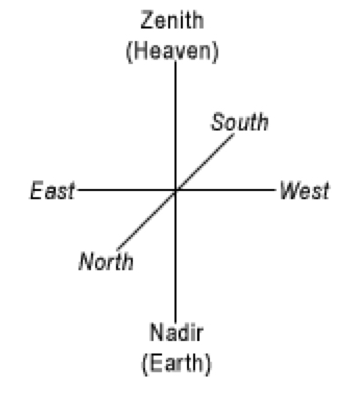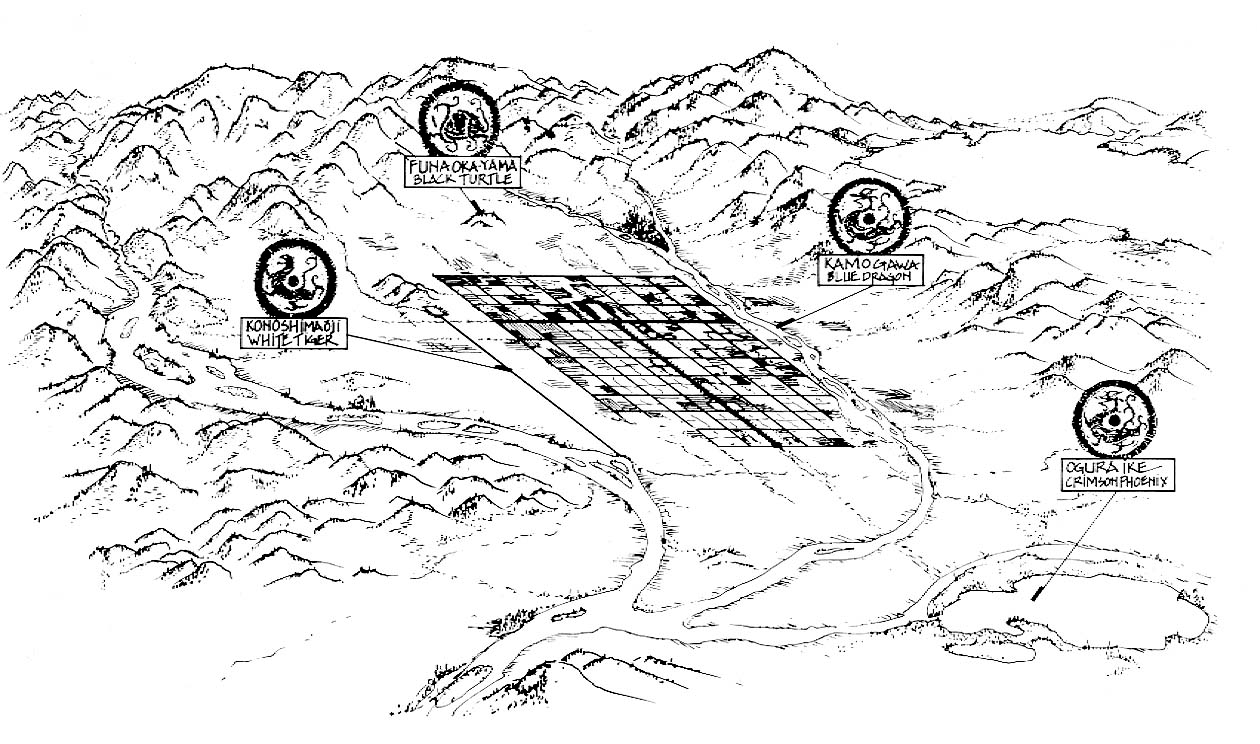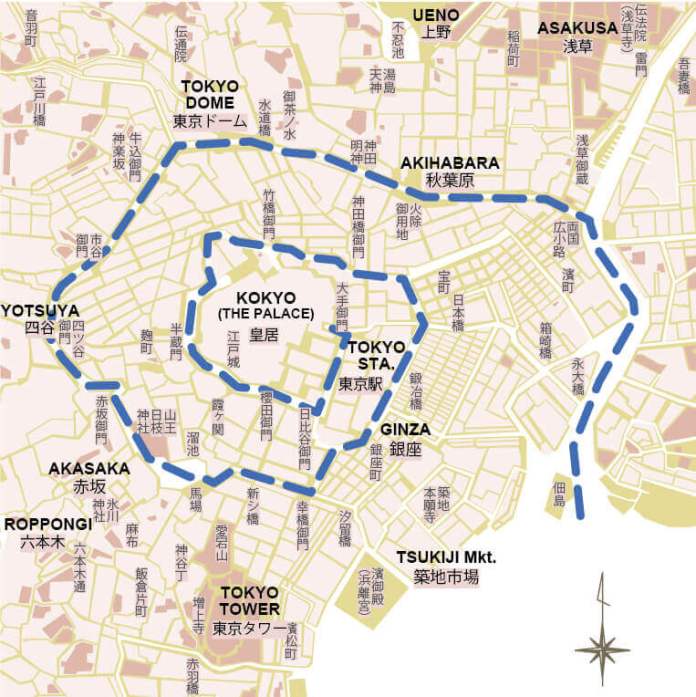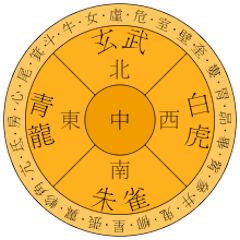| Four
Cosmic Mystical Animals (l_) |
|||||||||||||||||||||||||
| Ancient
Chinese cosmology is based on an imperial system which can best be
described using a three-dimensional coordinate system. The Emperor
is placed at the Zenith, Earth at the Nadir, and the surrounding stars
along the East-West and North-South coordinates. |
|||||||||||||||||||||||||

|
|||||||||||||||||||||||||
The
observable stars around the North Celestial Pole are classified under
three celestial enclosures:
The celestial hemisphere is divided into 28 mansions (ρ\ͺh [ΙΆγ€ΝΑ΅γ]) according to a lunar monthly cycle instead of an annual solar cycle. Ancient astronomers were then able to determine the lunar day just by looking at the moonfs location against the stars.
Five celestial animals rule the heaven. In the center is the Cosmic Yellow Dragon, (©΄ [±€θγ€]), which is also the emblem for the emperor. Ruling the 4 cardinal directions are:
The 28 Mansions radiating out of the center are divided equally among the four cardinal animals. Though these mystical animals are not related to the 12 animals of the Chinese zodiac, they are just as significant in Chinese mythology. They have their own corresponding season, color, element, and virtue, and are correlated with the fivefold conceptual scheme, known as Wu-xing or the Five Elemental phases:
The Azure Dragon (Β΄) is considered primary among the four celestial guardians. It rules the Eastern direction, the Wood Element and the virtue of propriety. Unlike the Western dragon, the Chinese dragon is considered an auspicious sign. It embodies strength, luck, fertility, vitality and power as well as spirituality. It is considered a powerful and auspicious sign. The Vermillion Bird (ι), often confused with the Chinese phoenix, rules the Southern direction, the Fire Element, and the five human qualities: virtue, duty, ritually correct behavior, humanity and reliability. It embodies fidelity, will, kindness and nobility. The White Tiger (Υ) rules the Western direction, the Metal Element and the virtue of righteousness. It is primarily a protector and preserver of the Buddhafs teachings and mankind. And it promotes intuition, vision, clairaudience, motherhood and unconditional love. The Black Turtle (Ί), often depicted together with a snake, rules the Northern direction, the Water Element, and symbolizes purity, intelligence, longevity and happiness. It symbolizes stability, endurance and mental agility. In Taoism, the turtle is the symbol of heaven and earth, its shell is like the vaulted heaven and its underside the flat disc of the earth. Historically, Chinese maps display south at the top. So the Vermillion Bird of the South is seated at the top. The White Tiger of the West is to the right, the Black Turtle at the bottom and the Azure Dragon of the East to the left. This is also one reason why the Five Elements circle, the Feng Shui bagua, and the Traditional Chinese Medicine diagrams place Spring (East) on the left, Summer (South) at the top, Autumn (West) on the right and Winter (North) at the bottom. The Chinese characters for Black Turtle are Ί (xuan-wu), which means Black Warrior. According to a Taoist legend, when Prince Xuan-wu decided to become a monk, he was told in order to achieve divinity he must purge himself of all human attachments. His stomach and intestines were the most attached to the world because of the food he ate. After he cut out his stomach and intestines he rose to the heavens. The organs left on earth turned into a demon turtle and a demon snake. They began terrorizing the countryside. In answer to the villagers' prayers, Xuan-wu returned to kill the demons. When the demons showed true remorse, Xuan-wu trained them to become his generals instead. According to Feng Shui, if one were to follow the laws of both Heaven and Earth one could influence onefs life positively. Most auspicious is to build tombs, houses and large cities according to the heavenly orientation of the cosmic animals. When Buddhism was introduced in Japan (ca. 552), it also brought a new, centralized, geometric city model regulated by Feng Shui. Ancient capitals like Fujiwara-kyo (‘΄), Heijo-kyo (½ι), and Heian-kyo (½ΐ) show Feng Shui influences such as erecting the symbol of the Vermillion bird in their Southern gate. Before the capital Nara moved to Kyoto, a geomancer was sent to determine if the area was propitious according to Feng Shui principles. |
|||||||||||||||||||||||||
 |
|||||||||||||||||||||||||
| After
Ieyasu Tokugawa (ΏμΖN) decided to build his capital seat in Edo (]Λ),
he sent his trusted Feng Shui master, priest Tenkai (VC), to study
the area. Under Tenkaifs recommendation Tokugawa had the Kanei Temple
(°i) built, the Hie Jinja (ϊ}_Π) restored, and relocated the Tone
River ((ͺμ ) to give the city gluckyh form. |
|||||||||||||||||||||||||
 |
|||||||||||||||||||||||||
| Once
installed in Edo, Ieyasu Tokugawa banned the study and use of Feng
Shui to prevent others from usurping his power. The Four Cosmic Animals should be displayed according to the Bagua principle, with the Black Warrior at the bottom; both the snake and the turtle are turned toward the Azure Dragon on the left. The Azure Dragon and the White Tiger on the right are looking upward toward the Vermillion bird at the top which is gazing outward. Main Menu @@@@@All Paintings Cj [ @@@@@·ΧΔΜG |
